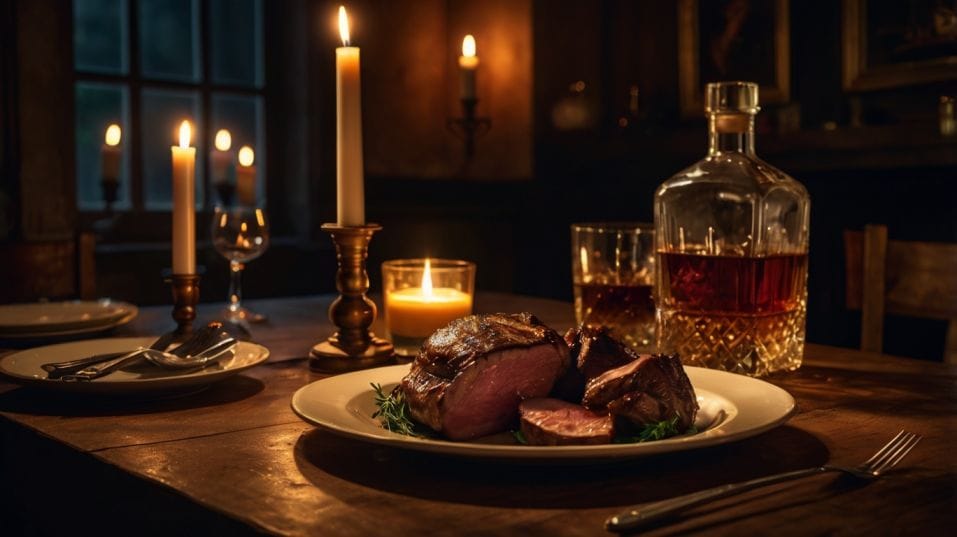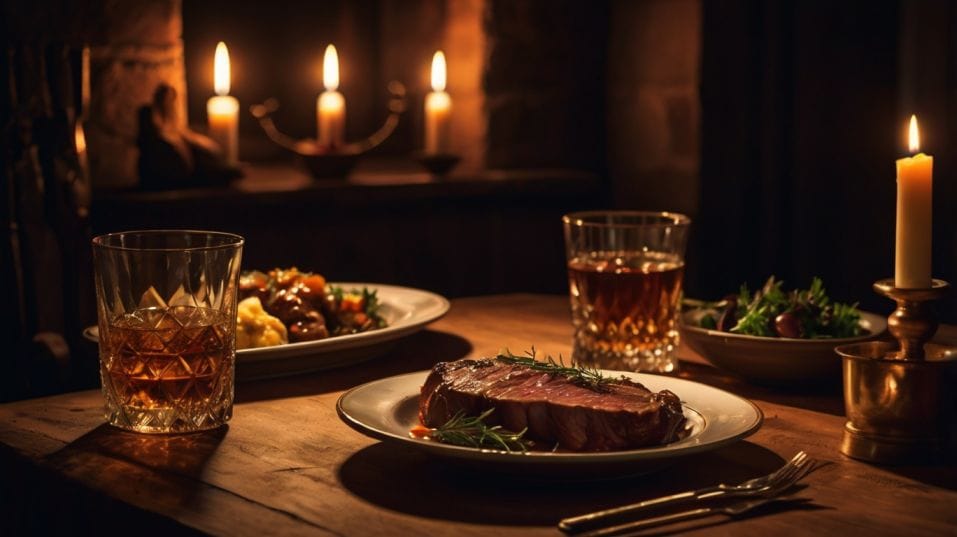Can Whiskey Replace Wine at Dinner?
Curious about pairing whiskey with food? Learn how to taste, match, and serve whiskey at dinner with confidence—even as a beginner.

Ever wonder if whiskey could actually belong on the dinner table? If you’re early in your whiskey journey, it’s tempting to think of it as an after-dinner drink or a collector’s hobby.
But the truth is, whiskey can do what wine does—and sometimes more. With the right pairings and a little know-how, it doesn’t just accompany a meal—it elevates it. Ready to move from sipping to savoring? Let’s break it down.
Whiskey Is Flavor-Forward—If You Know What You’re Tasting
Wine leans on subtlety. Whiskey leans into impact. The mistake is assuming that means it can’t be nuanced. Oak, malt, char, spice, tannin, sweetness, smoke—these aren't background notes in whiskey; they’re center stage.
What makes whiskey a serious contender for the dinner table is its dimensionality. Take a single malt finished in oloroso sherry casks—what you get is a rich backbone of dried fruits, roasted nuts, maybe a trace of bitter chocolate.
Pair that with lamb braised in Moroccan spices, and the overlap becomes obvious. You’re not forcing a fit—you’re drawing out echoes.
Where wine’s acidity cuts through fat, whiskey brings something different: structure and contrast.
A peppery rye doesn’t cleanse the palate like a Sauvignon Blanc—but it adds grip, tension, and lift. It reminds you of the bite before it, while preparing you for the next.

Build Pairings Around Texture, Not Just Taste
Forget matching “flavor to flavor.” You’ll outgrow that fast. Instead, pay attention to how the whiskey and the food feel on your palate.
Fatty foods love tannin. That’s where oak-aged bourbons shine. A ribeye steak doesn’t just survive a wheated bourbon—it needs it.
The viscosity of the whiskey bonds with the fat and amplifies the umami, while the wood spice adds complexity on the finish.
Lighter dishes—raw fish, grilled vegetables, cold noodles—don’t pair well with whiskey because they don’t offer enough texture to hold their ground.
But smoked trout with crème fraîche on rye crisps? That’s a perfect foil for a soft, floral single grain or a delicate lowland Scotch. It’s about interplay.
Don’t be afraid of peat. People think peated whiskies are too aggressive, but paired correctly, they behave beautifully.
Smoked meats, charred eggplant, toasted grains—these amplify the smoky character and pull the whiskey into the food. That’s pairing, not overpowering.
Use Dilution and Temperature Intentionally
Here’s the thing most whiskey drinkers miss at the table: you don’t have to drink it neat.
You’re not giving up your credentials by adding water or ice. You’re expanding the whiskey’s range. A few drops of water open the nose, drop the ethanol spike, and reveal layers you’d miss otherwise.
In a meal setting—where you’re tasting across bites, sauces, textures—that can be the difference between chaos and clarity.
Serving whiskey as a highball isn’t cheating. It’s refreshing. Whiskey plus chilled soda water brings brightness, bubbles, and pace.
It behaves more like a sparkling wine or aperitif, which opens up a whole new part of the meal: seafood, salads, creamy cheeses.
Don’t pour full drams. Think small pours, refreshed often. Let the whiskey evolve as the meal does. Let your guests return to it again and again, discovering something new each time.
Taste With Context, Not Just Curiosity
Tasting whiskey at a dinner table isn’t like tasting it at a bar. You’re not chasing complexity in isolation.
You’re watching how flavors interact, transform, and reappear. That’s how you build your palate—not by memorizing notes, but by tracking cause and effect.
Try This Exercise
Take a dish you know well—maybe roast chicken, maybe mushroom risotto—and pour three very different whiskeys beside it.
A spicy rye, a sweet bourbon, a smoky Scotch. Taste each one through the meal. Watch how each mouthful shifts. One will fade. One will clash. One will click.
That click is what you’re after. And once you find it, you don’t forget it. It’s what separates casual drinking from confident collecting.
What Whiskey Does That Wine Can’t
Wine brings elegance, brightness, tradition. But whiskey brings story, structure, memory. It’s rooted in grain, not grape—in fire and fermentation, not just soil. Its depth doesn’t fade across a meal—it stretches. It creates arcs.
The proof gives it lift, the barrel gives it contour, the distillate gives it a voice. And when paired well, whiskey doesn’t just sit beside food—it finishes it.
It invites slower pacing. More deliberate bites. Sharper attention. You taste not just the whiskey or the dish, but the space in between.
Final Thoughts
Can whiskey replace wine at dinner? Absolutely—but not by mimicking it. It wins by playing its own game.
If you’re serious about developing your whiskey knowledge, the table is your next training ground.
This is where you sharpen your palate, refine your preferences, and start collecting with purpose. Not just bottles, but experiences. Pairings that work. Moments that stick.
So here’s your move: pick a meal this week. Build a pairing with intent. Pour small. Taste slowly. Learn something. You're not just drinking anymore. You're building fluency. Start tonight.




